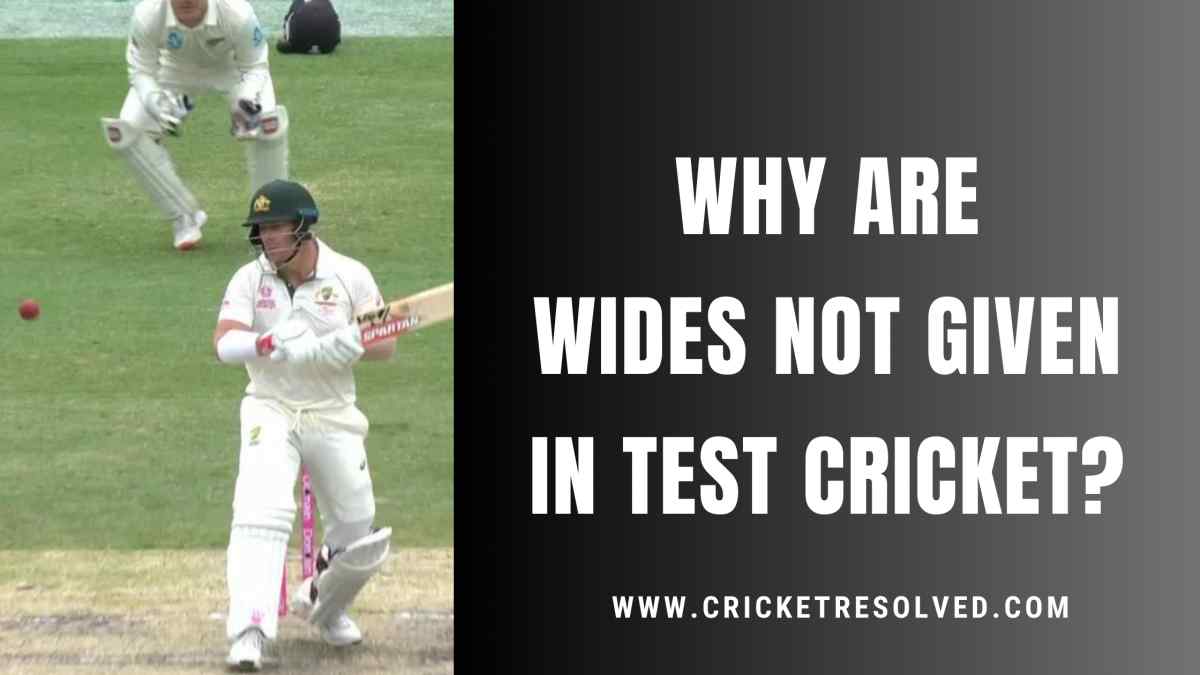
If you have watched limited-overs cricket like ODIs and T20s, then you must have seen umpires signalling balls bowled outside the reach of a batter as ‘wide’.
But if the same happens in Test cricket, then the umpires don’t signal it as a wide ball. So why is there a difference between wide rules in Test cricket and limited-overs cricket?
Well, let’s decipher the wide rules in Test cricket.
Are there No Wide Balls in Test Cricket?
It’s not like there are no wide balls given at all in the longer format. The umpires can still call some deliveries wide if the criteria are fulfilled.
However, certain balls are not given wide, which you see more often signalled wide in limited-overs format. But why is there a difference?
You see, in limited-overs cricket, down the leg side or too outside off deliveries are given wide, but that’s not the case with Test cricket.
The bowlers get a bit of a relaxation in the wide rule in Test cricket. And if you notice closely, there are no wide lines marked in a Test match, unlike ODIs or T20s.
Even if a bowler bowls too outside off the stump or down the leg side, the umpires don’t signal it as a wide. But the delivery will only be considered valid if it passes inside the return crease on the pitch.
If the ball passes slightly outside the return crease, then it will be signalled as wide. Moreover, if the bowler bowls a bouncer delivery that passes above the head of the batter, then it will also be ruled as wide.
Also Read | Decoding the Duties of Umpires in Cricket
But why are the most common wides not given in Tests?
In limited-overs cricket, bowlers bowl outside the reach of a batter as a defensive tactic to concede fewer runs. And if the bowlers keep bowling such deliveries too often, then there won’t be any fair competition between bat and ball. Hence, bowlers are penalised for bowling wides, and batters get to play one extra ball.
But when it comes to Tests, bowling too outside is of no benefit for any bowler or team, as they can’t get away with delivering wide balls. Furthermore, there is no limit on how many balls are bowled in Tests, so the bowlers try to bowl out their opponents as soon as possible, or else the batting team can go on and on.
No bowler wants to bowl longer spells in Test cricket, so their main aim is to grab the 20 wickets of the opponent by using attacking strategies rather than defensive ones.
And it is highly unlikely any bowler will use the wide bowling tactic intentionally, so the wide rules are not strict in Tests.


